Books
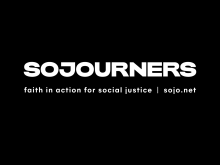

Seattle megachurch pastor Mark Driscoll has written a letter to his congregation to explain recent controversies, including the marketing campaign intended to place the book, Real Marriage, on The New York Times best-seller list.
In recent months, however, reports have emerged that Driscoll plagiarized some of the material in his books. And earlier this month, World magazine reported that Driscoll hired a firm to buy copies of the book he penned with his wife, Grace, so that it would top the best-seller lists.
In a letter posted on Reddit on Saturday, Driscoll apologized for using the marketing strategy.
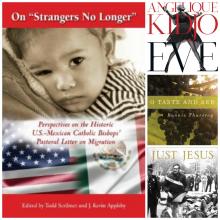
The Spirit’s Work
Just Jesus: My Struggle to Become Human, by Walter Wink with Steven Berry, is the final book by the late, influential Christian thinker. It blends brief autobiographical vignettes with essays on key themes in Wink’s work, offering insights into how his life story shaped his faith, thought, and witness. Image
Border Truths
On “Strangers No Longer”: Perspectives on the Historic U.S.-Mexican Catholic Bishops’ Pastoral Letter on Migration is a collection of essays by scholars and policy experts that uses the 2003 pastoral letter on immigration “Strangers No Longer: Together on the Journey of Hope” as its starting point. Paulist Press
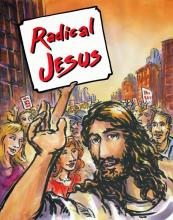
THE GRAPHIC NOVEL Radical Jesus, edited by Paul Buhle, has three distinct sections offering different expressions of Jesus’ life and social message. The brevity of the graphic novel medium allows the writers to construct a clear and distinct message in a moving art form.
Part one, “Radical Gospel,” illustrated by Sabrina Jones, uses biblical quotes to construct a visual story that connects the words of Jesus to modern situations. The black and white ink styling is simple yet profound.
While Jesus and his disciples are portrayed as first century Jews, the people Jesus interacts with and tells parables about are all in modern dress. This puts Jesus in an accessible conversation not only with his disciples, but also with the reader. In a collection of Jesus’ sayings from the Sermon on the Mount, the art drives home the emotional impact of his words.
Jones does not shy away from the radical implications of Jesus’ message. My favorite of her modern interpretations is an image of the destruction wreaked by the 9/11 attacks, contrasted with Jesus’ reference to the temple in Jerusalem, where he exclaims, “The day will come when there isn’t one stone left on top of another that is not thrown down.”
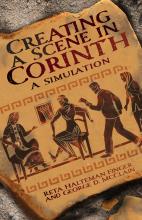
ONE YEAR MY small group decided to have each member choose a person named or alluded to in the gospels to “follow” during Lent. We researched our people and the customs of that time and reflected individually and collectively on their encounters with Jesus. Then we hosted a community meal for family and friends on the night before Easter. Each member of our group came in character as the person we’d studied and tried to recreate the mood of that frightening, confusing, grief-filled night for followers of Jesus after his death and before his resurrection. After the meal, each of us presented a monologue that tried to project what our person might have been thinking and experiencing at that time.
The attempt to immerse mind, soul, and body into scriptures that I had listened to for much of my life (but perhaps hadn’t really heard) was a transformative experience: It burned away long-held assumptions and revealed new facets of chapter and verse.
The book Creating a Scene in Corinth: A Simulation, by Sojourners contributing editor Reta Halteman Finger and George D. McClain, provides a useful and fun toolbox for small groups, Sunday schools, religion classes, and even imaginative individuals who want their own full-immersion experience of scripture and biblical scholarship. It invites readers to a deeper understanding of the apostle Paul’s letter to the church in Corinth by using role play to “become” members of the different factions of that community as they hear Paul’s words read for the first time. The authors assert that “as we more clearly experience what Paul meant in the first century, we can better understand what his writings mean in our 21st century context.”
THE STILL, ATTENTIVE, affectionate, at times lamenting, always sagacious, well-defined, occasional poems in This Day, Wendell Berry’s most recent collection, are a magnificent gift to American letters.
For nearly 35 years Berry has kept the Sabbath holy. His practice is either unorthodox or so deeply orthodox that professional religionists may not recognize it. On Sundays Berry walks his Kentucky “home place,” the roughly 125 acres of bottom land in the region his family has farmed for more than 200 years. From the seventh-day silence, solitude, and natural world, Berry has crafted his Sabbath poems.
“Occasional poems” commemorate public events, but here Berry lays quiet markers to remember personal days in the life of one man. He writes in the preface: “though I am happy to think that poetry may be reclaiming its public life, I am equally happy to insist that poetry also has a private life that is more important to it and more necessary to us.”





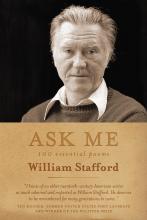
Miles of yellow wheat bend; their leaves / rustle away and wait for the sun and wind.
—From “A Farewell, Age Ten”
We wondered what our walk should mean, / taking that un-march quietly; / the sun stared at our signs—"Thou shalt not kill.”
—From “Peace Walk”
WILLIAM STAFFORD was a poet of the land and a conscience that fanned out over the land. Born in Hutchinson, Kan., 100 years ago—on Jan. 17, 1914—it was perhaps his early intimacy with space and sky that opened him to the mystery of human frailty.
At age 6, he saw two black students at his school being taunted by whites. He stood with them.
Another mystery: He who personifies the term national poet is largely unknown in his nation. Four new books (in his 79 years, Stafford published more than 50 books) published to coincide with his centennial might help redress this situation. Ask Me (Graywolf Press), from which the above excerpts are taken, brings to readers 100 “essential” Stafford poems dealing with his pacifism, his family, Native Americans, and the landscapes of his native Kansas and his adopted Oregon, where many centenary events are scheduled to take place.

INSIDE LLEWYN DAVIS, the new Coen brothers film, is the mournful tale of a folk musician too dedicated to his art to make money or to accept love when it’s offered him. It has gorgeous music, performances that are like watching characters step off the pages of a Joseph Mitchell New Yorker story, and language that is exquisite, but not so much that we don’t believe it. A common response to Inside Llewyn Davis is that it’s a pessimistic film, with characters so self-centered and worn down by money and the lack thereof that they cumulatively produce a world of no hope.
Many assert that the Coen brothers have pitched their tent as the anchor tenants of cinematic melancholia—Fargo’s bleak focus is a family utterly destroyed by financial pressures and the inability to know where or how to ask for help; Barton Fink’s eponymous protagonist finds his dream writing contract ends up a descent into hell; and The Man Who Wasn’t There is finally executed because he doesn’t see the point in defending himself. Llewyn Davis is an impetuous man in a fickle industry, too out of touch with his own humanity to want to see his own child, and he is beaten up for heckling a fellow musician. And so people come out of this film depressed. To which my minority response is simple: Look closer. Inside Llewyn Davis is full of life and second chances and, yes, hope for artists. Davis has friends who care, and there are people who get what he does. Who cares if the world isn’t listening? That was never a measure of great art anyway.

What if what you thought were advantages were actually disadvantages? And what you thought were disadvantages ended up being what actually makes people successful?
So embarks best-selling author Malcolm Gladwell of Blink, The Tipping Point, Outliers, and What the Dog Saw in his new book: David and Goliath. In the same clear, concise style that made his other books so intriguing, Gladwell challenges yet another widespread assumption — that being the underdog tends to make one an underdog forever.
Instead he argues that being the underdog can give one the upper hand. In his signature approach, Gladwell supports his hypothesis with a series of narratives, from the classic case of David and Goliath to the forgiveness one Canadian Mennonite woman was able to work towards after her daughter was murdered. Like his previous books, David and Goliath is both entertaining and thought provoking and obliges readers reflect over their lives and reconsider personal “disadvantages” that actually required them to learn skills they otherwise might not have had.
Hagar’s Story
Sisters in the Wilderness: The Challenge of Womanist God-Talk, by Delores S. Williams, now professor emerita of theology and culture at Union Theological Seminary, is a landmark in womanist thought. The recently released 20th anniversary edition has a new foreword by Katie G. Cannon. Orbis
Moving Music
Jon Batiste and his band, Stay Human, have played on the New York subway and in other public spaces in free-ranging, mobile performances they call “love riots.” Their album Social Music offers that same positive spirit and a fresh take on jazz. Razor & Tie


The past few months have flown by in true whirlwind fashion (my co-worker Katie aptly describes the professional whirlwind here). And as the hours tick down to the end of 2013, I find myself facing a bit of a personal whirlwind, surrounded by boxes, bins and far more hangers of clothes than I’m happy to admit. I am thick in the middle of a move, in what I’m calling my boomerang return to D.C. and Sojourners, after a three-year hiatus in the great Northeast.
As I pack up all my belongings, it’s becoming clear that books dominate an absurd amount of bins and boxes — turns out I have a penchant for the printed word (if moving isn’t a compelling argument for a Kindle, I surely don’t know what is). Therefore, it feels appropriate and timely to reflect on which of these titles affected me most this past year. As the director of Major Gifts (and newest member of the team), I’ve been particularly consumed with thinking through resource distribution, stewardship, and the power of the purse, so it is with this lens that I share my top reads of 2013.

As you make your winter reading list or shop for gifts, consider these 2013 books from Sojourners magazine staff and contributors. Or, buy yourself a gift for 2014.
EVERY SO often an extraordinary book appears with potential to bring change—or at least advance justice by mitigating nationalism or prejudice. Rabbi Michael Lerner’s Embracing Israel/Palestine: A Strategy to Heal and Transform the Middle East is such a book. The appeal is clear: Be both pro-Palestinian and pro-Israeli and pray for the best for each.
The book is a gut-wrencher as it describes the results of cyclical violence and reaction that fuels descent into paralyzing trauma and anger for both Arabs and Israelis.
Lerner, an advocate for Middle East justice and founder of Tikkun magazine, speaks truth about the human-made tragedy of the Israeli/Palestinian conflict. His transformative counsel about what people and nations can do to participate positively is desperately needed. Social justice advocates have been offered a candid and honest reprise of the tragic thinking and actions of oppressed people who should have known better than to visit the same on “the other.”
Lerner’s way toward peace is grounded in many years of living in and traveling to Israel/Palestine, loving the two protagonists equally, and constantly exploring his and others’ souls. In spite of the victimizing and traumatizing of both Jews and Arabs, he remains hopeful. Embracing makes for a compelling and even inspiring read. I devoured most of it in two sittings, captivated by Lerner’s vision.
NO ORDINARY MEN: Dietrich Bonhoeffer and Hans von Dohnanyi, Resisters Against Hitler in Church and State is a tightly woven story framed by the sophisticated historical analysis of its two authors, former senior Farrar, Straus, and Giroux editor Elisabeth Sifton (daughter of theologian Reinhold Niebuhr) and Columbia University professor emeritus Fritz Stern, a famed German scholar. The book profiles two brave young men—Bonhoeffer, a theologian and minister deeply involved in fighting the Nazis’ efforts to control the German Protestant churches, and Dohnanyi, a brilliant lawyer (son of Hungarian composer Ernst Dohnanyi) working in the German Ministry of Justice, who used his key position to methodically collect evidence against the Nazi regime.
Sifton and Stern portray Dohnanyi in detail as a leader in the small but high-powered German resistance movement. Brig. Gen. Hans Oster, a resistance member, hired Dohnanyi away from the Ministry of Justice ostensibly to help run the Abwehr, a German military intelligence organization that was also the center of the anti-Hitler resistance, in 1939. Dietrich Bonhoeffer was then recruited by Dohnanyi to be part of this team. Dohnanyi’s wife, Christine (Bonhoeffer’s sister), is also revealed as a significant influence on and aide to her husband.
The slim, 157-page volume is an important new historical work in the growing field of research on the German resistance movement during World War II. It is a penetrating look at Dohnanyi’s dangerous operations against the Nazis with historical perspective that other books on him and Bonhoeffer lack. Earlier biographies, written mainly by church people, more or less emphasized Bonheoffer as a singular hero fighting Hitler. Bonhoeffer was indeed very brave and traveled thousands of miles abroad while working as an agent for the Abwehr, but he was just one of a circle of resisters.